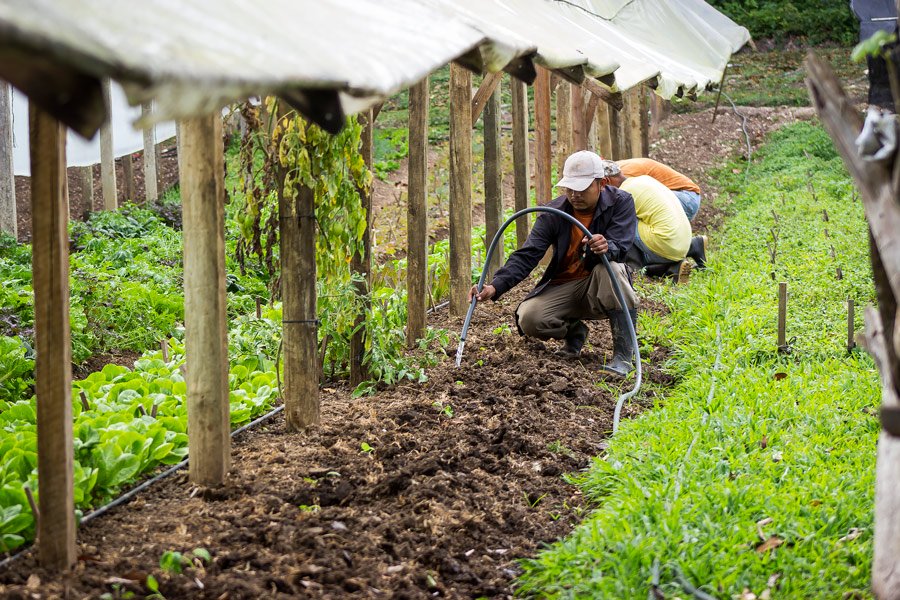And Chaa Creek makes ancient history come alive
A dramatic new discovery in Belize is generating waves of excitement among the world’s top Maya researchers, archaeologists, historians and scientists.
Not to mention those of us here at Chaa Creek.
And, as Belize inches closer to opening up for tourism, the news reminds travellers of the rich cultural explorations that await here in the Heartland of the Maya.

What, you may ask, is causing this excitement?
Corn, or, as it’s mostly known outside of North America, maize.
As the planet’s second most cultivated grain for human consumption, maize has been the subject of all sorts of studies. How ancient civilizations in the Americas took a humble grass grain and cultivated it into such an important crop – one that was responsible for the growth of the Olmec, Aztec, Maya, and other civilizations, makes for fascinating reading.
And, once again, an important key to understanding the development of the ancient Maya civilisation has been found in Belize.

Research currently being conducted in Belize’s Maya Mountains at the ancient Saki Tzul rock shelters has opened up a new understanding of just how long maize has been used as food.
The Maya Mountains research unearthed rare, well preserved skeletons, and used cutting- edge technology to show that, when they were walking around some 4,700 years ago, the owners of those skeletons had been eating maize.
People had been living under the Saki Tzul rock shelters continuously for 10,000 years, so it makes the perfect laboratory for the researchers to work out exactly when the local people began eating what. As the University of Exeter’s Dr Mark Robinson, who co-directed the field research, said;
“This is the only example of a burial site in the Neotropics used repeatedly for 10,000 years, giving us an unparalleled opportunity to study dietary change over a long time period, including the introduction of maize into the region.
“This is the first direct evidence to show when the change in people’s diets occurred and the rate at which maize increased in economic and dietary importance until it became fundamental to peoples dietary, economic, and religious lives,” Dr Robinson said.

Think about it – an ancient rock shelter in Belize contains vital clues to how one of the ancient world’s most advanced civilisations developed.
Being able to cultivate food, instead of hunting and gathering in the jungles, led to leisure time. And just like the ancient Romans, Greeks, and other peoples, the Maya used that leisure time to develop a written language, philosophies, scientific discoveries, astronomy, advances in medicine and the construction of cities with huge temples, libraries and other complex infrastructure. All thanks to maize.
We’ll never look at a tamale the same way again.

The details of the research are fascinating, but as it’s beyond the scope of our limited space here, we’ve placed some links below for your reading pleasure.
And if this has piqued your interest in the ancient Maya, there’s all sorts of information online and in your local libraries. Better yet, there’s all sorts of actual examples of the genius of the ancient Maya to discover in Belize.
Back in the day, the Chaa Creek area was a sprawling Maya agricultural, trading and habitation area. Set along the banks of the Macal River – an integral part of the Maya’s trade routes connecting the highlands of Guatemala with the Caribbean seacoast routes, and sitting between the important metropolises of Caracol and Tikal, Chaa Creek was a bustling, vibrant suburb.

You can see this today by exploring nearby Xunantunich, the royal residences at Cahal Pech, and idyllic El Pilar. There are also the many ceremonial caves, such as the mind-blowing Actun Tunichil Muknal, packed with pottery, sacrificial altars and other artefacts, including the famous Crystal Maiden.

Right here within Chaa Creek’s 400-acre private nature reserve, with miles of signposted trails, some 70 ancient Maya archaeological sites, including the little temple of Tunichilen, have been recorded.
So, Belize is not only research heaven, it also offers a rare and wonderful opportunity for laypeople to become immersed in ancient history – whether climbing the beautiful El Castillo pyramid of Xunantunich with its magnificent views, canoeing the Macal River, whose pristine jungle riverbanks and wildlife haven’t changed much since the Maya paddled along it for thousands of years, or enjoying authentic Maya hot chocolate from local cacao cultivated right here for centuries, or tucking into tamales, cervices and other meals largely unchanged since the glory days of the Maya Empire.

Reading about the ancient Maya civilisation is fascinating, but to experience it in real life, walking the steps trod by Maya rulers centuries ago, truly makes history come alive.
And, with Chaa Creek’s wide range of accommodations, luxurious amenities, exciting activities, you can do it all in the casual luxury Chaa Creek has become famous for.
Slowly but surely the day is coming when travel opens up again, and Belize, with its low population density, fresh air, unspoiled Caribbean coastline and nearly a quarter of the land and territorial waters set aside as protected wilderness, is already considered to be one of the world’s safer destinations.
Belize earned worldwide acclaim for early measures to stop the Coronavirus at it borders, and then contain its spread when the first of only 19 COVID cases appeared.
You can read about Chaa Creek’s stringent measures to ensure the safety of our guests and staff here https://www.chaacreek.com/covid19-updates. And you can rest assured that we are continuing to meet and exceed every protocol and recommendation to maintain the highest standards of hygiene and safe operations.
We’ve been busy while you’ve been gone, and now every member of Team Chaa Creek; from the founding family owners and managers, staff, naturalist guides, suppliers and support staff, are champing at the bit to do what we do best – introduce visitors to the colourful history, cultures and stunning natural wonders of our rainforest paradise.We look forward to seeing you!
